Section 9: Eczematous Disorders (red with disruption of skin surface)
79
Atopic dermatitis (AD)
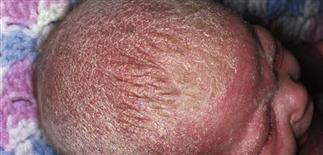
Onset of AD in infant with red scaly scalp.
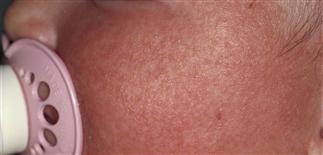
Early redness, fine scale and dryness to cheeks in baby with AD.
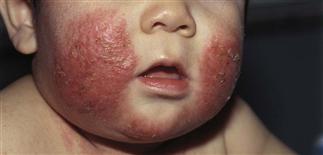
Red, oozing and crusting cheeks of infant with AD.
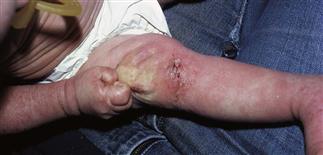
Scratching frenzy in toddler with AD.
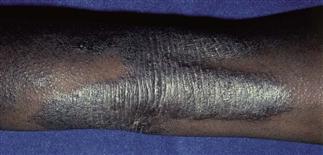
Shiny hyperpigmented, lichenified skin in antecubital fossa of preteen girl.

Vesicles and redness of fingers and palm of preteen with AD.
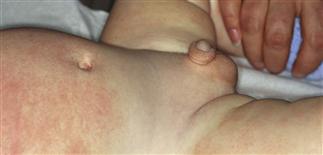
Mild redness and scale of skin except area protected by diaper in AD.
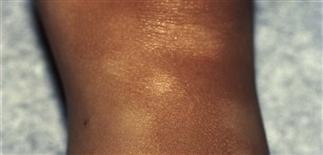
Hypopigmented scaly areas in AD (pityriasis alba).
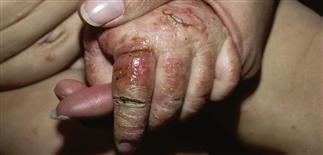
Fissures in skin permit bacterial invasion in AD.

Staphylococcal furuncle on finger in child with AD.
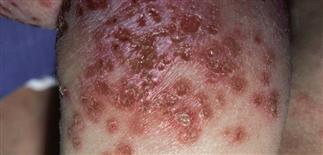
Vesicles and erosions of HSV infecting AD (eczema herpeticum).
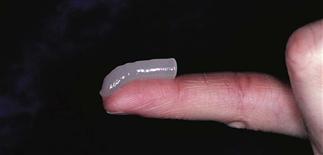
Fingertip unit. Amount of ointment or cream from distal finger crease to tip.
CLINICAL FEATURES
The terms dermatitis and eczema are used interchangeably although eczema was originally used to designate blistering disease. Dermatitis implies inflammation of dermis but eczematous eruptions also have major epidermal involvement with disruption of the skin surface as a major feature. The disruption can be seen clinically as crusting, weeping, scaling, excoriation or fissures and microscopically as breaks in the epidermal barrier.
Atopic dermatitis, the most common form of childhood dermatitis, affects up to 20% of children. It is inherited, and recent genetic evidence links AD to loss of function polymorphisms or mutations in the filaggrin genes, responsible for the integrity of the outer epidermis. This explains the link between ichthyosis vulgaris (see DDx ref 70 Ichthyosis) and AD. Functional abnormalities of other epidermal outer envelope genes such as SPINK5 in Netherton’s syndrome
Stay updated, free articles. Join our Telegram channel

Full access? Get Clinical Tree






